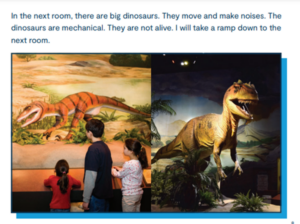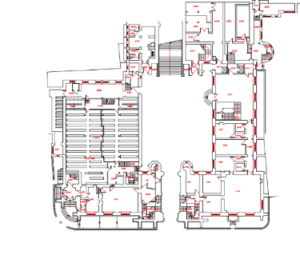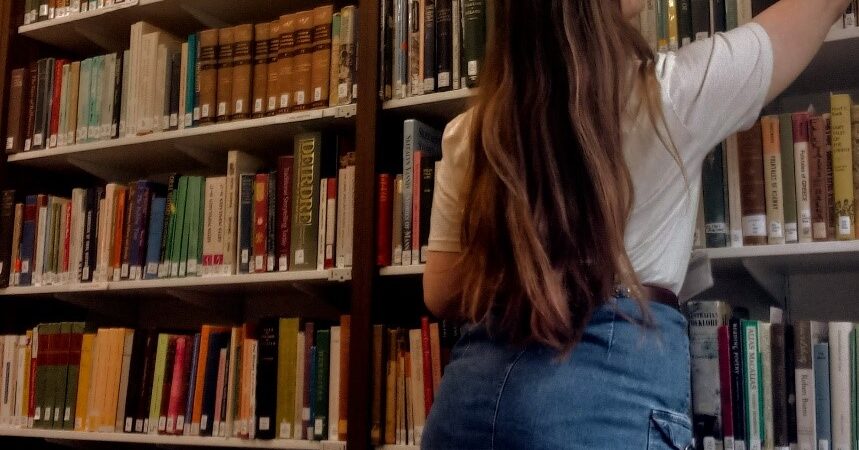Name: Ailsa Dixon
Year of study & degree: Scottish Ethnology, Entering 4th Year
Internship: Heritage Collections Accessibility Internship: Neurodiversity
Team within ISG: Heritage Collections
Meal deal of choice: The Tesco falafel and houmous wrap, Lipton peach ice tea and watermelon pot (if those aren’t available, I try and game the system and get the three most expensive items to maximize the money off).
Favourite floor in Argyle House: N/A, but I love the library ‘tea corridor’
An internship is rather like a quest. You’re placed into a new environment, given a task to complete in a limited time span, given some assistance from your wise mentors but ultimately have to figure a lot out by yourself. I’m Ailsa, a Scottish Ethnology student (with an academic interest in traditional narrative and ballads, and autism, as you may be able to tell) and have just come to the end of my internship with the Heritage Collections Team focusing on accessibility and neurodiversity. My task? To create sensory maps of key heritage collections sites, including the Center for Research Collections on the 6th floor of the Library, St Cecilia’s Hall, the School of Scottish Studies Archives and the New College Divinity Library to increase accessibility for neurodiverse users.
The internship has been a fantastic experience, and I have learnt a lot, but what is the point of knowledge if you hoard it to yourself? So, I’m manifesting my inner bard/monk/poet and presenting you with the chronicles of my Adventure – Sensory Maps! An adventure Quest in 6 easy steps!
So you want to make a sensory map? So that future adventurers will be able to safely traverse the wild hills and dales of the Heritage Collections locations? But you don’t really know what makes a sensory map ‘good’? The first step in your quest is to gather the ancient and venerable knowledge unto you – it’s time to Benchmark!
1. Benchmarking
Enter research wizard mode. Look up the websites of as many major or minor museums as you can think of across the globe, and analyze the sensory maps, visual guides and social stories they have on their site. Create lists of your likes, dislikes, tone and style. From this list, you will see a magic formula emerge of best practice. In this case, that formula was:
- Clean and uncluttered
- Containing sensory information and additional miscellaneous ‘good to knows’
- Functional as a map
- Designed for neurodivergent adults, usable by anybody

(I was surprised to see how many major museums, like the Victoria and Albert, haven’t yet created accessibility resources. On the other hand, my personal favorite thing I found in my benchmarking exercise was this wonderful (and I’m sure very useful) page from the Pacific Science Center’s social story, designed for young autistic visitors that says ‘in the next room, there are big dinosaurs. They move and make noises. The dinosaurs are mechanical. They are not alive.’)
2. Simplifying
Now you have benchmarked, prepare to meet your biggest foe – the architectural plan! Working from floor plans and blueprints, you’ll need to enlist the help of your greatest ally, the sharpest sword in your armory – Adobe Illustrator!! Learn the magic of how to wield your weaponry by spending a morning watching Adobe Illustrator Tutorial Videos, then using layering, tracing (and the self-restraint not to punch a computer) transfigure these complicated maps into simple templates of your locations.
 – The Enemy!!!!
– The Enemy!!!!
3. Auditing
Now comes the detection element. Map in hand, explore your locations, locating and tracking potential threats – The deadly overhead lights!! Bagpipe noises from the street!! Creaky Floors!! Do not be afraid to ask for assistance from the wise archivists, the custodians of these locations – questions such as ‘does this room always smell like this?’ and ‘is it always this weirdly noisy’ are not rude but useful investigative queries in this context.
4. Drafting
Once you have ventured, return to your castle. Employing your trusty sword (Adobe illustrator) and a barrage of sensory symbols, label your map templates carefully to ensure future adventurers will be aware of the dangers. Create lists of ‘good to knows’ and add additional information like toilet and lift locations, staff only areas, where lockers are and where you can find staff members.
5. Testing
Now you’ve created your sensory map, gather unto you a band of faithful knights. Arm them with A4 printouts of your maps and attempt to traverse the mysterious buildings. At the end of day when you have returned from your adventures, share your knowledge and discoveries, discuss the meaning of the symbols and cover the map in pencil edits and red pen.
6. Redrafting
Once more return to Adobe Illustrator. Finesse, finalize, export and print. Your quest is at an end!
Reflection
Any good quest features challenges, successes and surprising lessons learnt along the way; There have been lots of steep learning curves in the process of developing this project, but I created successful outcomes and, at the end of my internship, I can look back on tangible evidence of a job well done that will be used by people in the years to come.
On a quest you see strange and magnificent sights. I’ve spent time in the archives, seen Penicillin’s Mould, a Burke and Hare scrapbook, an illustrated harpsichord, building blueprints and filing cabinets full of folktale summaries.
On a quest you discover strange skills. I’ve learnt how to make a book shoe, why rare books need pillows, what a ‘snake weight’ is, how office jobs function and how to export a vector file (and what a vector file is).
As I walk off into the sunset, out of this story and into another, I wonder what is next? Personally, I am now more committed than ever to pursuing a career in the museum and heritage sector and am working on my Masters’ applications to museum studies and library and archival courses. When it comes to sensory maps, I only hope this is the start of something larger. I would love there to be more access to and investment in accessibility resources, including sensory maps across the university and the wider heritage sector. (Anyone want to hire me to do the 6-step process for Potterrow? How would I categorise Big Cheese…)


